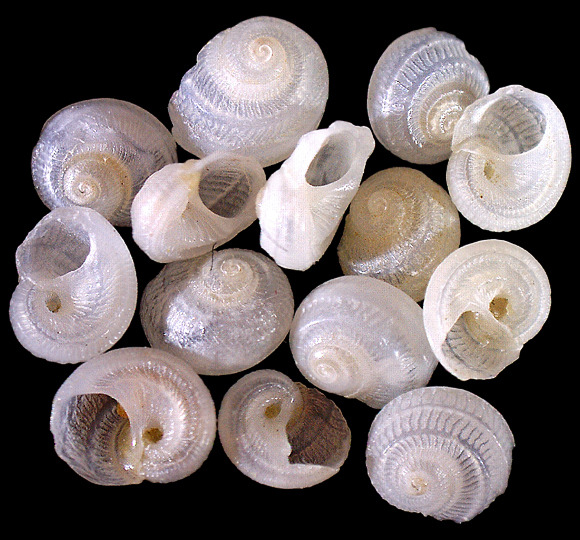
Micrograzer in the infralittoral, often found under stones in sandy bottoms (Audibert & Delemarre, 2010).
Original taxon: Helix subcarinata.
Synonyms: pusilla, rugosus.
Dredged at 20m deep, Ceuta, N. Morocco. 1,5-2mm.
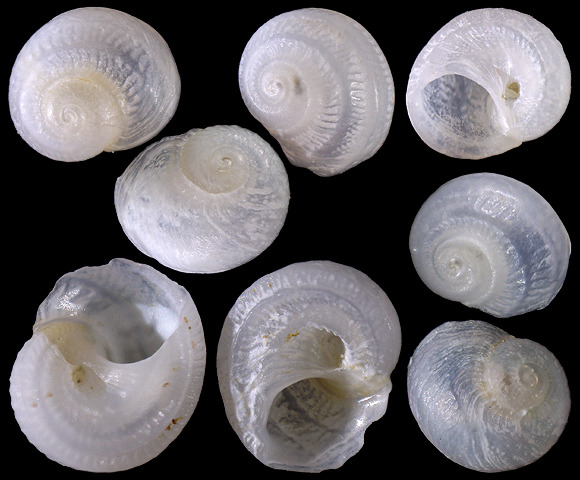
At low tide, in grit, La Poudrière, Surville-Plage, Cotentin, W. Normandy, NW. France. 1,5-2,5mm. H. Proes legit (DE).
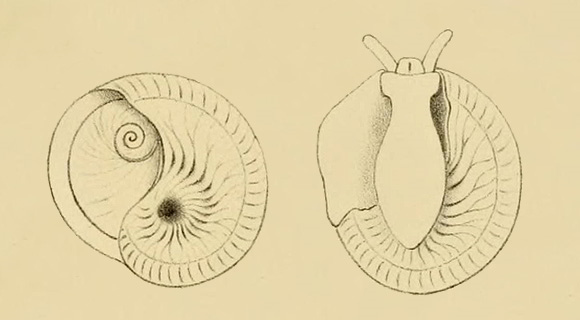
« According to Marshall, this mollusk would be quite large proportionally to its shell, and would have a red color so intense that it seemed to have stained the fingers of the observer (Jeffreys, British Conchology, vol.V, 216, 1869). Duprey’s observations (Annals and Magazine of Natural History, Volume XVIII, pp. 545, 1876) are much more extensive: “Body white, semi-transparent, stained rose, easily contained in the shell; muzzle quite long, extensible, indented at its anterior extremity, and of a brilliant red internally; tentacles divergent, rather long, extensible, blunt at their extremities, or even in the shape of a club; […] very small eyes, placed at the external base and a little behind the tentacles, usually covered by the shell and visible only when the animal is circumventing itself; foot […] white, with a reddish longitudinal zone in the middle; […] This animal is not shy, and swims upside down at the surface of the water. Its shell is sometimes white, but in general it has an ochre hue.” »
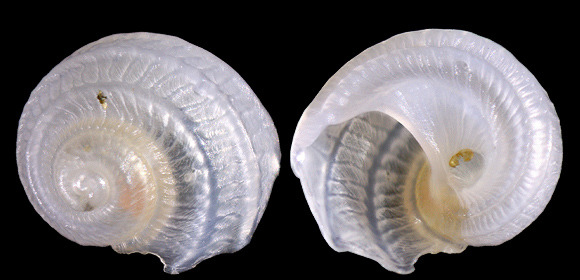
« The Adeorbis animals are found under shoreline rocks, in areas with blackish mud, in the littoral zone and in the upper Laminaria zone. Their reddish tint helps to distinguish them quite easily. » – P. Fischer: op. cit. p. 171.
15-25m deep, Málaga bay, Andalucia, S. Spain. 1,5mm.
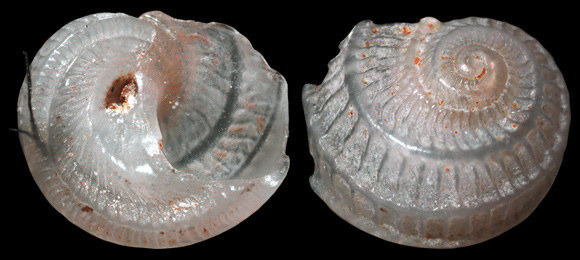
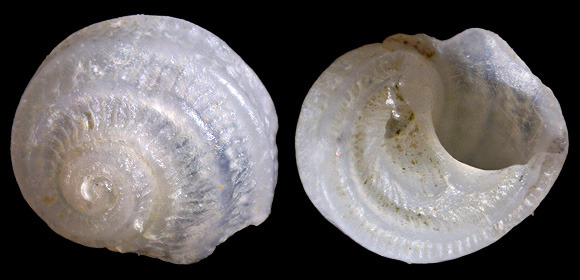
1,8-2,1mm.